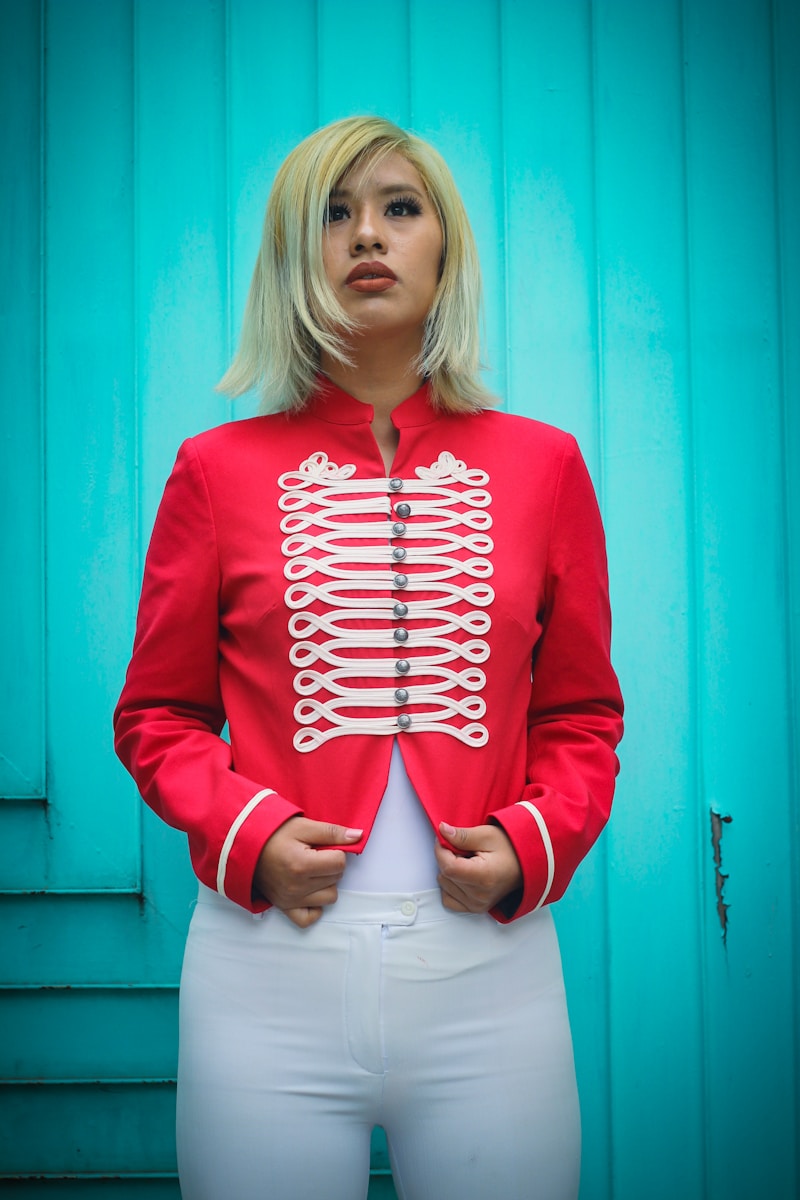Fashion thrives on change, yet certain revolutions don’t rely on loudness to make an impact. In recent years, one of the most fascinating shifts in style has not been about bold colors or dizzying patterns, but about the quiet power of touch. Texture—whether plush, ribbed, quilted, or rough-hewn—has become the new print, commanding attention through sensation rather than spectacle. Where fashion once relied on bright florals or geometric motifs to create drama, designers today are discovering that texture alone can tell a more sophisticated, visceral story.
This essay unpacks the rise of tactile fashion, exploring its historical roots, aesthetic impact, psychological resonance, and practical place in the modern wardrobe.
From Decoration to Dimension
Prints have long been the backbone of fashion expression. Paisley spoke of bohemian rebellion, plaid symbolized Scottish tradition and later punk subversion, and florals became seasonal shorthand for femininity. Yet prints are flat by nature—two-dimensional images stamped onto fabric. Texture, in contrast, gives garments dimensionality. Corduroy ridges, bouclé loops, or velvet piles don’t just decorate—they reshape how light hits the body, how clothing drapes, and how people physically interact with what you wear.
This marks a subtle but important evolution. Fashion is no longer only about what the eye consumes at a distance but also what the hand feels up close. A ribbed knit sweater or a faux-fur coat invites contact, creating intimacy between garment and wearer that print alone cannot.
Historical Echoes of Texture
While the current embrace of texture feels modern, history is full of examples where fabric’s surface defined status and taste.
Medieval Europe: Nobility wrapped themselves in brocades woven with gold threads. The shimmering relief distinguished elite classes from commoners.
The Victorian Era: Layers of lace and velvet transformed fashion into tactile theater, signaling wealth through elaborate material contrasts.
1960s Revolution: Designers like Paco Rabanne used metal discs and plastics to experiment with futuristic textures, showing that innovation in surface could be as radical as a new cut.
What has shifted today is accessibility. Where once elaborate textures belonged only to aristocracy or avant-garde circles, modern technology allows textured fabrics to be mass-produced without losing their richness.
Why Texture Speaks Louder Than Print
Emotional Connection
Touch is the most primal of senses. A fuzzy mohair sweater triggers comfort memories, while leather conveys toughness and durability. Texture engages emotions instantly, bypassing intellectual interpretation.
Subtle Sophistication
Prints often demand attention; they are loud and assertive. Texture, however, whispers. It draws interest without overwhelming, appealing to a modern desire for minimalism with depth.
Adaptability Across Styles
From grunge flannels to couture tweeds, texture adapts to every aesthetic. A quilted bomber jacket carries streetwear appeal, while a silk crepe gown oozes elegance—proof that touch-based design isn’t confined to any one fashion tribe.
Enhanced Longevity
Prints can feel dated once the trend cycle shifts. Textures—wool, suede, denim—are perennial. They transcend seasonal shifts, grounding wardrobes in fabrics that age gracefully.
The Runway Embrace
Recent runway seasons have confirmed texture’s dominance. Designers from Paris to New York have foregrounded tactile surfaces as central design elements.
Chanel’s Tweed Revival: The house continues to prove that looped bouclé needs no print, its irregular texture offering visual intrigue and timeless elegance.
Bottega Veneta’s Leather Work: By weaving leather into exaggerated patterns, the brand transformed a smooth surface into an architectural spectacle.
Prada’s Nylon Experiment: Elevating a utilitarian fabric by playing with sheen and crinkle, Prada demonstrated that even synthetic textures could hold luxury appeal.
These choices emphasize that the future of fashion may be less about pattern-making on flat cloth and more about engineering fabric surfaces themselves.
The Role of Technology
Advances in fabric production have made texture more versatile than ever. 3D knitting, laser cutting, and innovative weaving techniques allow designers to sculpt textiles with precision. Materials like neoprene or mesh, once confined to sportswear, now appear in couture collections. Technology has blurred the line between fabric and sculpture, enabling clothing to feel alive with dimension.
Digital fashion, too, borrows from this language. In virtual garments designed for augmented reality or gaming, designers mimic exaggerated textures—metallic folds, crystalline edges—to simulate tactility in digital spaces. Even when touch is impossible, texture is imagined.
Everyday Texture: Street to Closet
The beauty of tactile fashion is its accessibility. Unlike high-drama prints, which require boldness to wear, textures often integrate naturally into everyday wardrobes.
Denim: Its durability and visible weave make it one of the most democratic textures, beloved for its lived-in authenticity.
Knits: From chunky fisherman sweaters to ribbed tank tops, knitted fabrics bring coziness and adaptability.
Faux Fur & Sherpa: Once reserved for winter coats, these textures now line sneakers, handbags, and even bucket hats, adding playful softness.
Quilting: Once utilitarian in blankets, quilting has become a streetwear staple, turning jackets into sculptural, padded statements.
These everyday examples prove texture is not an avant-garde experiment but a practical, enjoyable way to make clothing dynamic.
The Psychology of Tactile Dressing
Texture influences not just how clothes look but how they make us feel. Psychologists note that tactile experiences can alter mood and confidence. A structured wool blazer may encourage feelings of authority, while silk draped against skin evokes sensuality. This explains why textured garments often become favorites—their emotional resonance goes beyond visual style.
Interestingly, tactile fashion also alters how others perceive us. A velvet dress may read as luxurious, while raw denim projects rugged authenticity. In this sense, texture acts as silent communication, signaling identity through fabric choice.
Texture in Contrast
One of texture’s most powerful features is its ability to play off other textures. Juxtapositions create interest without requiring print.
Leather with Lace: A timeless mix of hard and soft, rebellion and romance.
Velvet with Denim: Luxury grounded by casual sturdiness.
Silk with Wool: Smooth fluidity offset by structured warmth.
These contrasts keep monochrome outfits visually exciting. Where print once served as the go-to tool for contrast, now surface interplay does the job with more sophistication.
Sustainability and Texture
The growing awareness of sustainability in fashion also fuels the texture movement. Natural fibers like hemp, wool, and organic cotton carry inherent surface character, making them appealing alternatives to printed synthetics. Vintage shopping highlights texture as well: aged leather, frayed denim, and worn knits each tell stories through their surfaces. In this context, texture becomes not just an aesthetic choice but a moral one, a way of finding richness without excess.
How to Embrace Texture Like a Pro
Start Neutral: Textured neutrals—beige corduroy trousers, black velvet loafers—integrate easily into wardrobes without risk.
Mix Fearlessly: Don’t be afraid to layer different tactile surfaces; balance is achieved by keeping colors restrained.
Use Accessories: A crocodile-embossed bag or shearling-lined hat introduces touchable intrigue without overwhelming.
Play with Scale: Chunky knits or exaggerated quilting create volume, while finer textures like silk provide subtlety.
Trust Your Senses: When shopping, let your hands guide you. If a fabric feels irresistible to the touch, it will likely translate into lasting joy in your closet.
Why Texture Is Here to Stay
Unlike print, which often rides waves of trend cycles, texture speaks to something more primal. It transcends the visual spectacle of fashion and reconnects us with the tactile, grounding clothing in our senses and bodies. In an increasingly digital, screen-based world, the hunger for tangible experiences has only intensified. Texture satisfies that craving, turning garments into multisensory encounters.
Where prints project personality outward, textures draw people inward—inviting touch, creating connection, and elevating even the simplest designs. This is why texture is not merely replacing print as a fashion statement but reshaping the very language of style.



